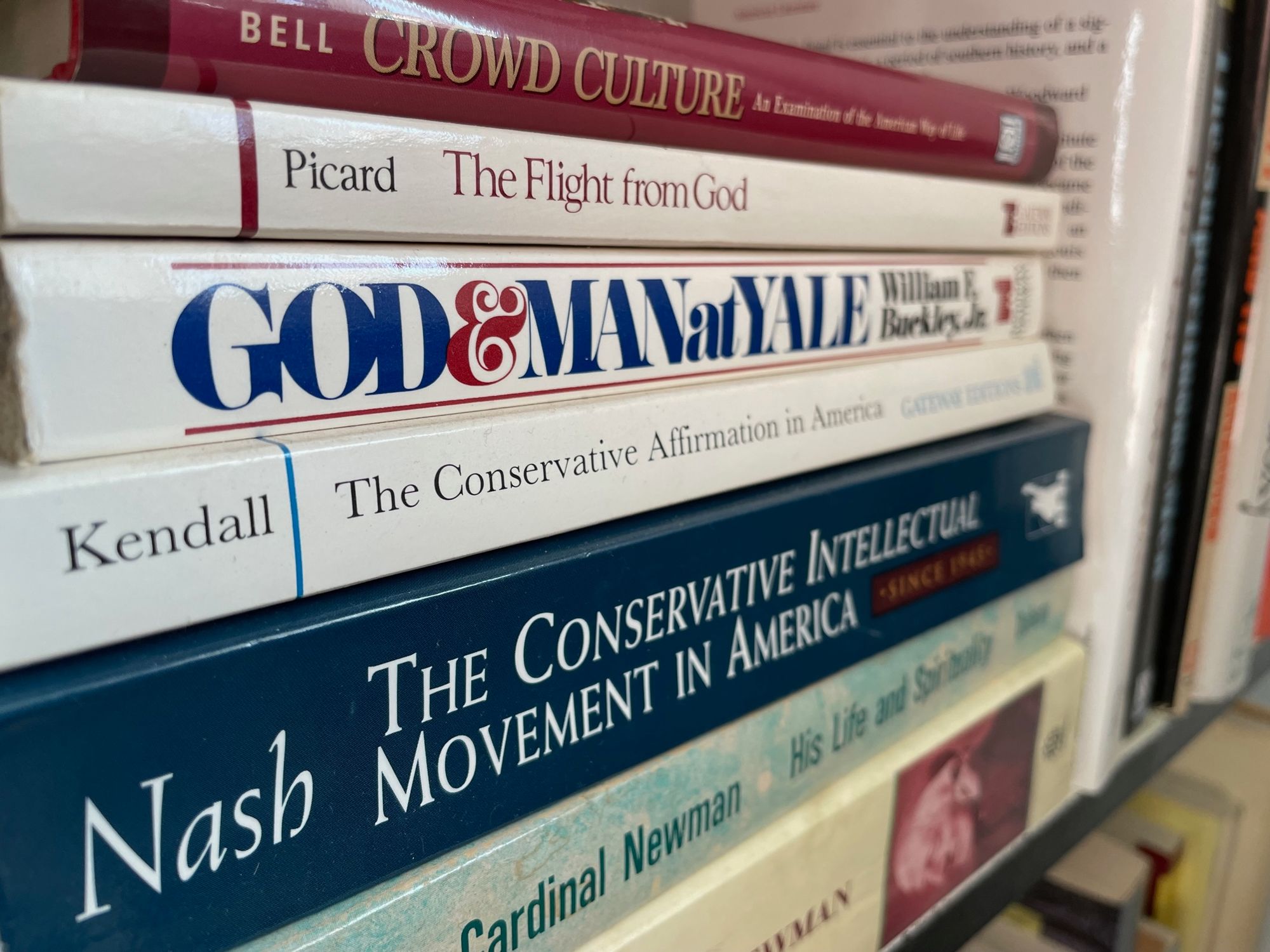Old Mistakes From the New Right
Tyler Syck at Law & Liberty


The American right is engaged in a complicated and increasingly dirty conflict. On one side is the new right, committed to political populism, the hostile takeover of the state, and more communitarian economic policies. Opposing them is the old right, a hodge-podge collection of individuals committed to limited government, free markets, and a bellicose foreign policy. The right is locked in the often fractious process of trying to reforge a functional coalition. There’s some space for discussion and negotiation; after all, it’s not as if political coalitions are ever moving completely in lockstep, with perfectly aligned principles. But some things are a bridge too far. Sometimes you must acknowledge that even a big tent cannot cover absolutely everyone. Many of the new right’s ideas can lead down the path to political and intellectual bankruptcy.
Nowhere is this more evident than in a recent essay published by Nick Solheim for The American Mind. In the essay, Solheim tries to outline an intellectual foundation for the new right. This is a laudable task for any political movement, and I must congratulate him for his attempt at thoughtfulness. In the final analysis though, his essay was rambling and philosophically confused. Despite the murkiness of his argumentation, Solheim’s argument does have one discernable theme: a desire to end the pluralist foundations of the American regime. This task blatantly sheds the conservative exterior of the new right and reveals the most tyrannical chamber of its heart.
Solheim’s fascinating articulation of America’s problems is of course not all wrong. First, he is absolutely right to point out that our current moment is one plagued by serious political problems. Corrupt business leaders and a dangerously unaware media seem intent on uprooting the very foundations of American society. However, Solheim misses the extent to which populist rhetoric, as used in his own essay, further exacerbates the problem. Instead of alerting the upper class of American society to their own frailties, the rhetoric of the elites vs. the people instantly puts them on the defensive. In short, Solheim forgets that few people under assault feel open to changing their views, and if anything, are inclined to double down on their mistakes.
Second, Solheim is right to point out that the administrative state is here to stay. We may not have to like this fact, but no nation on earth can function without some form of administrative state. Solheim is also right to point out that the permanence of the state does not imply it cannot be reformed. However, in outlining the reforms he would like to see, Solheim loses the plot a bit. He advocates for agencies to be restaffed with individuals who “truly represent the people they serve.” Setting this demand in the context of the rest of the essay, it’s hard to believe that Solheim actually wants bureaucrats attuned to the real views of the American people. Setting that to the side, however, one cannot help but be baffled by how widely Solheim misses the real problem with the current American state.
It should be made clear that the vast majority of the state’s work is entirely harmless, helpful even—ensuring our meat is safe to eat, securing our nuclear weapons, and so on. The problem is the various small parts that are not harmless—the parts of the state that seek to invade each and every facet of our lives and tell people how to live. It is precisely this portion of the state that presumably the new right wishes to take over since it is hard to imagine that Solheim wishes to accomplish his political aims by setting standards for milk pasteurization or checking road gradations. In this respect, Solheim does not so much want to solve the problems posed by the modern American state, as exacerbate them. He accurately states that education in the United States has become frequently trapped in an unhealthy progressive dogmatism. However, this is the product not of some inevitable liberal drift but instead of the creation of a thuggishly interventionist regulatory state. Solheim seems to see a forced conservative curriculum in schools as the only real alternative to overweening progressivism. Likewise, the essay heavily implies that there is some appropriate role for the state in perpetuating traditional gender norms. As I have pointed out elsewhere, these types of statist attempts to create a virtuous society are doomed to fail since they fundamentally misunderstand the nature of virtue.



